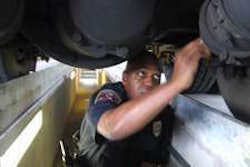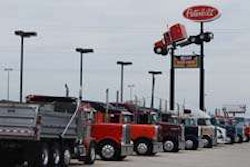
“I would certainly encourage someone to do that study because that would also contribute to less turnover, because (what) grinds these folks down is that you only get paid by how far you go and how quickly you go because the faster you go, the more miles you can drive within a set period of time,” the Missouri Democrat said.
Pay by the mile or load is the norm for long-haul drivers, although companies may pay hourly for certain conditions, such as detention time or loading. While they did not examine the merits of hourly pay, the Federal Highway Administration and Federal Motor Carrier Safety Administration completed research on the relationship between driver compensation and safety in 2002.
“Higher pay produces superior safety performance for firms and for drivers,” the study concluded.
In recent years, Louisiana-based Dupré Logistics began hourly pay for its nearly 800 company drivers.
“The hourly compensation structure has proven beneficial in terms of safety, human resources and retention of our drivers,” said President Tom Voelkel. “It’s an initiative with benefits that far outweigh the cost to our bottom line.” He did not elaborate.
Dupre CFO Tom Place said while some companies may have gone to hourly wage, it does not appear to be a trend. For Dupre, it “significantly decreased turnover” and drivers preferred it. While wages vary, company drivers make $15-$21 an hour plus overtime, he said.
Alabama-based B.R. Trucking uses an incentive program, based on 10 to 12 parameters, said Greg Brown, president and CEO. Its 155 drivers begin with a thousand points and lose points for incidents such as speeding tickets, hard braking or hitting below target fuel mileage. They are considering, as the FMCSA’s CSA 2010 progresses, awarding points for desired results, such as clean roadside inspections, he said.
“We have considered hourly pay for some of our shorter haul freight, but have decided to stay with the mileage pay that we are currently using,” Brown said. “Our drivers don’t have a problem with it.”
Some carriers have announced per-mile increases, including Crete Carrier Corp. It, along with operating division Shaffer Trucking and its subsidiary Hunt Transportation, said will increase pay 3 cents for new national drivers
According to the U.S. Department of Labor’s latest figures, the median wage for heavy truck drivers $37,730, but driver compensation is also affected by demand.
FTR Associates, a logistics and transportation forecasting firm, said hiring/training departments were “drastically downsized during this recession.” These cuts decreased trucking’s hiring ability by 33 percent, and “therefore, freight growth will easily overtake the ability to add drivers to the numerous parked trucks that are available.”
“The active fleet is near equilibrium and will be a tight capacity market by the second half of 2010,” FTR reported. “This will put significant upward pressure on both pricing and driver hiring. The need to hire drivers will far outpace the industry’s ability to add drivers by the time we hit the third quarter of this year. With just our modest freight forecast, we show that the driver shortage will last until 2012 before finally abating as the industry takes time to ramp up its training and recruitment ability.”
The 2010-11 edition of the federal Occupational Outlook Handbook stated truck driver employment growth is expected to grow 9 percent over the 2008-18 decade, or as fast as the average for all occupations. Economic growth will create more job opportunities. An estimated 291,900 new jobs will be created over this period.
The Federal Reserve Bank compiles feedback from contacts in its 12 districts. In the New York district, a trucking-industry contact reported some pickup in business in recent months, though conditions remain weak. “There are scattered reports of shortages of truck drivers – partly due to more stringent requirements for commercial drivers’ licenses,” the Fed reported in April, without elaborating.
The Cleveland district noted freight transport volume and freight costs, particularly on ocean freight, were up dramatically. Atlanta’s district said freight demand was continuing to improve, the Fed said.









